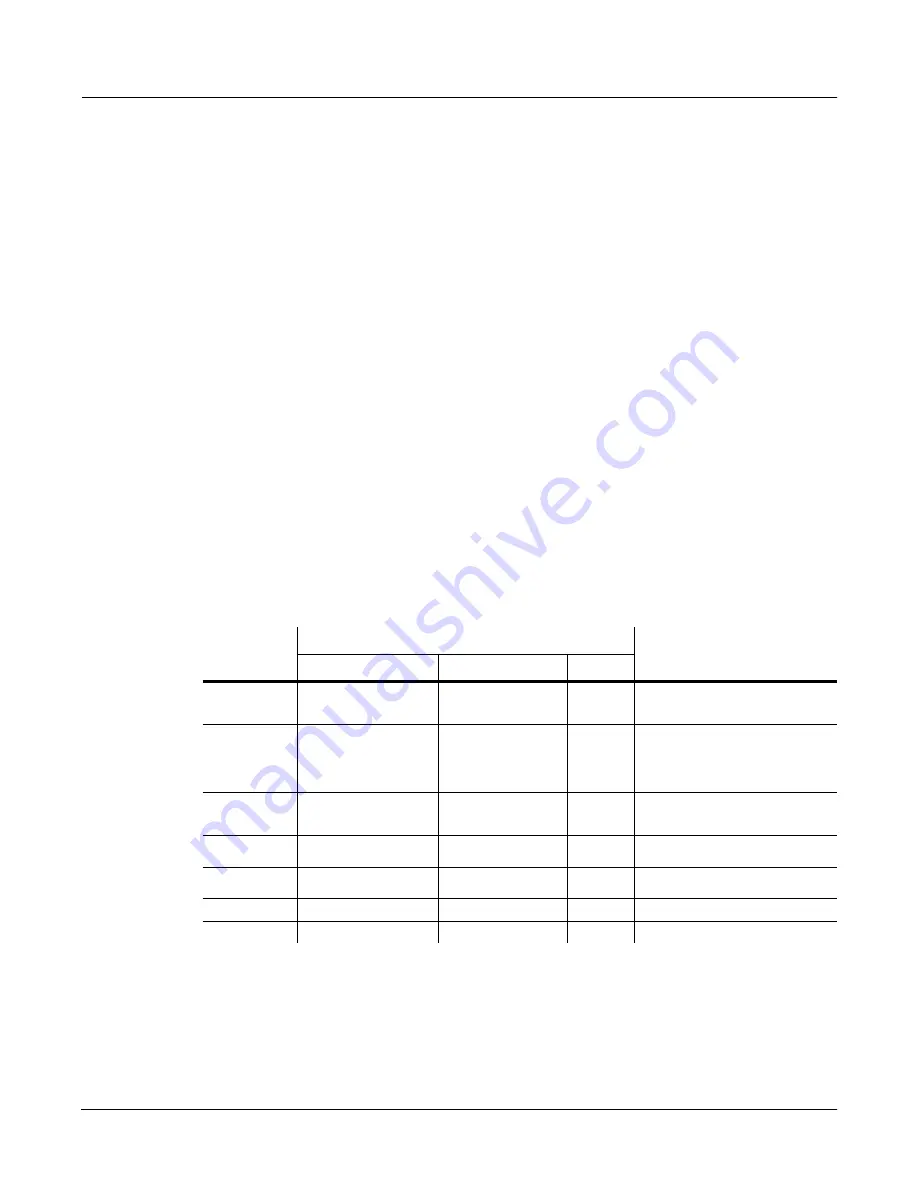
Descriptions of Parameters
Setup Editor Parameters
5-23
Limit Option (Limit Opt)
Determines what the arpeggiator does when it has shifted the currently latched notes up (or
down) to the shift limit. there are seven possible values:
Stop
Causes the Arpeggiator to stop the arpeggiation when it reaches the shift limit.
Reset
Causes the Arpeggiator to return to its original pitch and repeat the latched cycle of notes,
transposing each cycle according to the settings for Note Shift and Shift Limit. If the limit allows
the notes to go out of MIDI range (for example, if you set Shift to
12
, set the limit to
80
, and play
C4), then those ÒghostÓ notes donÕt sound, but they take up rhythmic space: the arpeggiator
waits for the cycle to play itself out before starting over.
Unipolar
After transposing to the shift limit, the arpeggiator begins shifting notes in the opposite
direction, until it reaches the original pitch, where it reverses again. To determine the next note
when it reaches the shift limit, the arpeggiator calculates the interval between the shift limit and
what the next note would be if the shift limit werenÕt there. It then plays the note that is the
calculated interval lower (if reversing from upward transposition) than the last note before the
shift limit. The same thing happens in reverse when the arpeggiated notes get back to the
original pitch. The following table makes this easier to visualize by showing the result of
arpeggiating one note (C4) in Unipolar mode, with Note Shift set to
3 ST
and various values for
Shift Limit.
Bipolar
Starts out the same way as
Unipolar
, but during downward note shifting, it continues past the
original pitch until it hits the shift limit in the
opposite
direction, where it reverses again.
Shift Limit
Resulting Arpeggiation (When LimitOption is Unipolar)
Comment
Up
Down
Up
6 ST (F#4)
C4, D
#
4, F
#
4, D
#
4, C4
D#4, …
Same notes play in both directions
when Shift Limit is a multiple of Note
Shift
7 ST (G4)
C4, D
#
4, F
#
4, E4,
C
#
4,
D
#
4, …
Last upward note before shift limit is
F#4, next upward note would be A4,
which is 2 ST from shift limit (G4);
therefore first downward note is E4
(2 ST below last upward note)
8 ST (G
#
4)
C4, D
#
4, F
#
4,
F4, D4,
D
#
4, …
A4 is 1 ST from shift limit, therefore
first downward note is F4 (1 ST lower
than last upward note)
9 ST (A4)
C4, D
#
4, F
#
4, A4
F
#
4, D
#
4, C4,
D#4, …
All symmetrical again; now A4 is
within shift limit
10 ST (A#4)
C4, D
#
4, F
#
4, A4,
G4, E4, C
#
4,
D
#
4, …
Next upward note would be C5, which
is 2 ST from shift limit
11 ST (B4)
C4, D
#
4, F
#
4, A4,
G
#
4, F4, D4,
D
#
4, …
C5 is 1 ST from shift limit
12 ST (C5)
C4, D
#
4, F
#
4, A4, C5,
A4, F
#
4, D
#
4, C4,
D#4, …
Symmetrical again, including C5






























